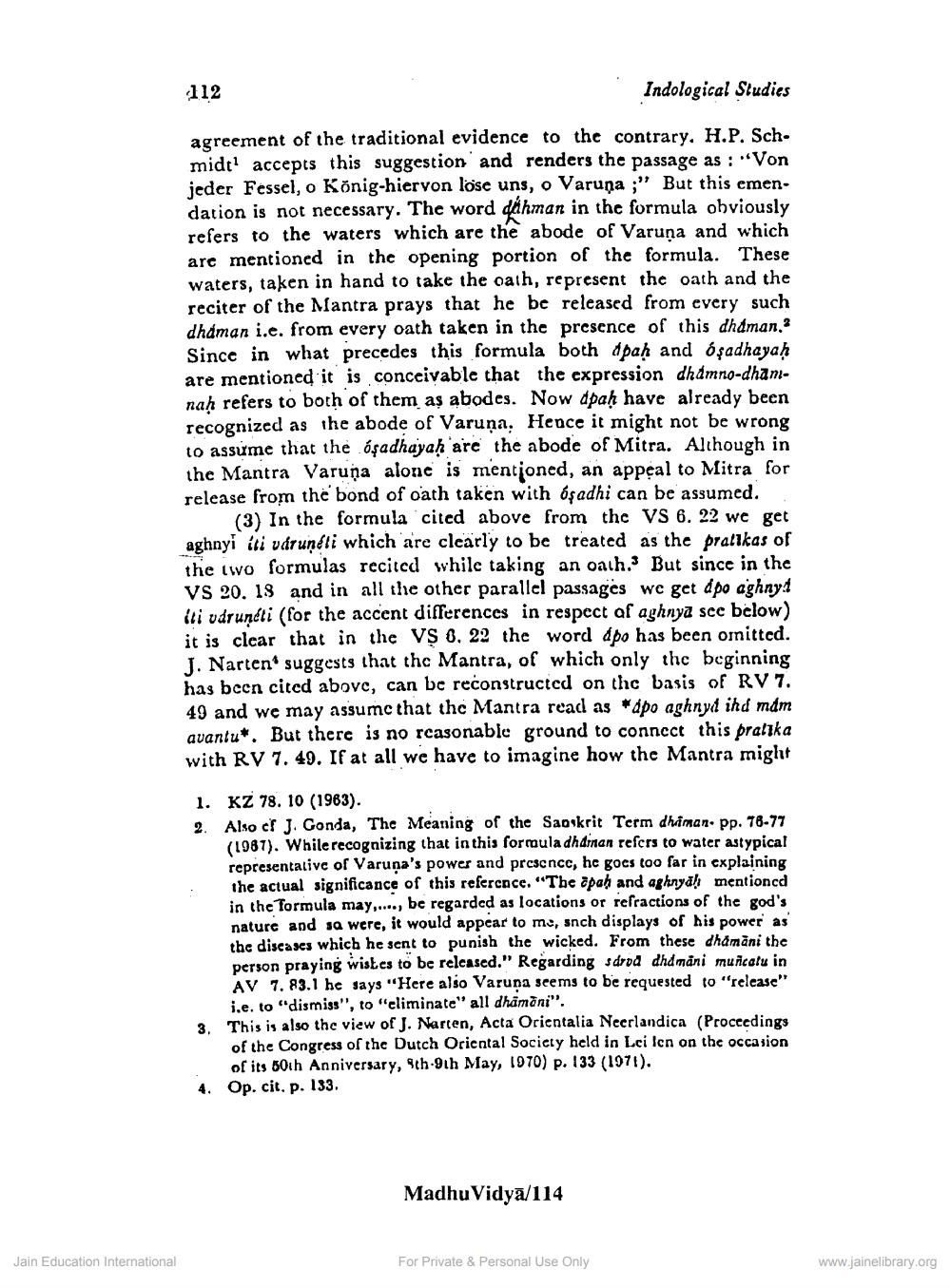________________
112
Indological Studies
agreement of the traditional evidence to the contrary, H.P. Sch. midt" accepts this suggestion and renders the passage as : "Von jeder Fessel, o König-hiervon lose uns, o Varuna ;" But this emendation is not necessary. The word dahman in the formula obviously refers to the waters which are the abode of Varuna and which are mentioned in the opening portion of the formula. These waters, taken in hand to take the oath, represent the oath and the reciter of the Mantra prays that he be released from every such dhaman i.e. from every oath taken in the presence of this dhamana Since in what precedes this formula both apaḥ and óşadhayaḥ are mentioned it is conceivable that the expression dhdmno-dhannah refers to both of them as abodes. Now dpah have already been recognized as the abode of Varuņa. Hence it might not be wrong to assume that the ósadhayah are the abode of Mitra. Although in the Mantra Varuna alone is mentioned, an appeal to Mitra for release from the bond of oath taken with ósadhi can be assumed.
(3) In the formula cited above from thc VS 6. 22 we get aghnyi iti vdruņéli which are clearly to be treated as the pralikas of the two formulas recited while taking an oath. But since in the VS 20. 18 and in all the other parallel passages we get dpo aghnyt ili udrunéti (for the accent differences in respect of aghnya see below) it is clear that in the VS 6. 22 the word dpo has been omitted. J. Narten suggests that the Mantra, of which only the beginning has been cited above, can be reconstructed on the basis of RV 7. 49 and we may assumc that the Mantra read as "apo aghnyt ihd mdm avantu*. But there is no reasonablc ground to connect this pralika with RV 7. 49. If at all we have to imagine how the Mantra might
1. KZ 78. 10 (1963). 2. Also er J. Gonda, The Meaning of the Saoskrit Term dhiman. pp. 78-77
(1987). While recognizing that in this formula dhdinan refers to water astypical representative of Varuna's power and presence, he goes too far in explaining the actual significance of this reference. "The apah and aghnyah mentioned in the formula may....., be regarded as locations or refractions of the god's nature and sa were, it would appear to me, snch displays of his power as the diseases which he sent to punish the wicked. From these dhamani the person praying wistes to be released." Regarding sdrod dhdmäni muncalu in AV 7. 83.1 he says "Here also Varuna seems to be requested to "release" i.e. to dismiss", to "eliminate" all dhamani". This is also the view of J. Narten, Acta Orientalia Neerlandica (Proceedings of the Congress of the Dutch Oriental Society held in Lci lon on the occasion
of its 60th Anniversary, Sth-9th May, 1970) p. 133 (1971). 4. Op. cit. p. 133.
Madhu Vidya/114
Jain Education International
For Private & Personal Use Only
www.jainelibrary.org




